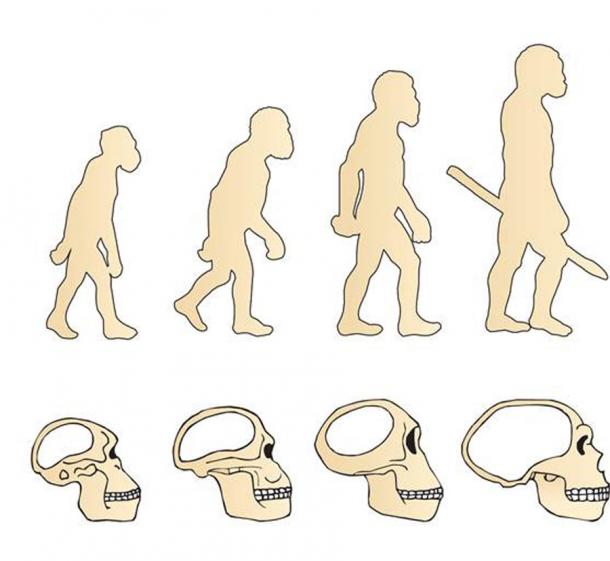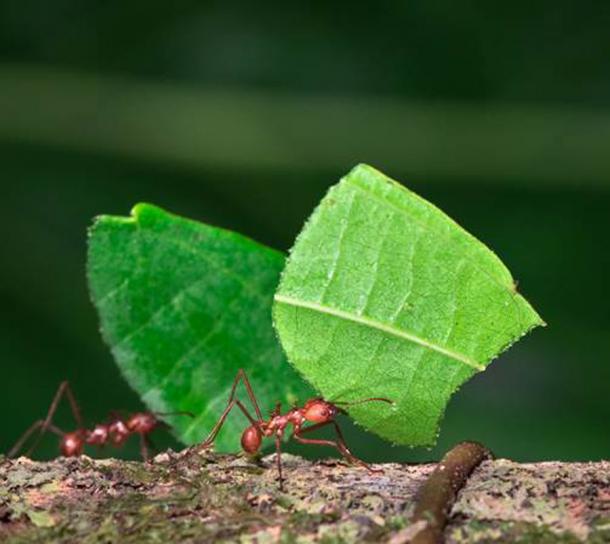Through the process of greater efficiency, the human brain size began to shrink about 3,000 years ago and this is a huge new revelation in human evolution. The latest research study conclusions suggest that specializations in labor or task-based work, along with shared knowledge through the development of language and social circles, allowed the human brain to progressively become more energy efficient and thus smaller in size. While the size of human brain size has changed throughout history at various key junctures, a gradual decrease began around the end of the Pleistocene Epoch, i.e., the waning of the last Ice Age, some 12,000 years ago. This new research is the subject of a study published in Frontiers in Ecology and Evolution , a leading research and analysis magazine.

Evolution of the human brain from bigger to bigger still and then suddenly 3,000 years ago it starts to shrink. ( kotjarko / Adobe Stock)
Human Brain Size Shrinkage Is a Recent Phenomena
Human brain size has nearly quadrupled in the six million years “since Homo last shared a common ancestor with the chimpanzees,” write the authors of the study, led by lead co-author Professor Jeremy M. DeSilva from the Department of Anthropology, Dartmouth College, USA. He and a group of researchers from across the world, employed a method of scientific dating related to change-point analysis (performed on a series of time ordered data in order to detect whether any changes have occurred) to determine that hominin brains experienced positive rate changes at 2.1 and 1.5 million years, respectively.
This, incidentally, coincided with notable events in the archaeological record in terms of early evolution, and technological changes and innovations , one of these being the first evidence of the control of fire by a Homo sapiens group.
The reduction in brain size, however, seems to be fairly recent, beginning in a measurable way about 3,000 years ago. What is interesting is that these changes have not been linked to either a reduction in body-size, a shift to domestication, or to a change in diet .
Rather, the research study’s conclusions suggest that decreased human brain size resulted from the externalization of knowledge, and advantages in shared group-decision making , owing to the steady increased hierarchical organization of humans. In the brief calendar of human history, it was only between 10,000 and 6,000 years ago, that human beings began living in settlements, and practicing settled agriculture, i.e., during the Neolithic Revolution .
Incidentally, it was due to surplus production that society began being organized into its first forms of hierarchy, patriarchy, and divisions of specialized labor. From this societal paradigm shift emerged new (and still present) social classes like peasants, artisans, chieftains, priests, weavers, and shepherds.
And living in more organized social hierarchies with multiple brains involved in decision-making processes, contributed to the emergence of a collective intelligence.

The human brain shrinkage study also looked at the brains of leaf-cutter ants and other societally advanced ant species. ( Kevin / Adobe Stock)
Ant Socialization and Collective Intelligence and Humans
Modern brains are likely to be even smaller today due to cloud-computed technologies that store everything, literally becoming an external record of human memory. Dr James Traniello, from the Department of Biology, Boston University and co-author of the study, said in a statement to Sci-Tech Daily , “We propose that this decrease was due to increased reliance on collective intelligence, the idea that a group of people is smarter than the smartest person in the group, often called the ‘wisdom of the crowds’.”
As per a report in the Daily Mail , the scientists painstakingly studied computational and data models. The also looked at the brain sizes of ants, specifically worker ants. Since ants live in colonies and groups too, the parallel drawn was interesting as it assessed not just size, but structure, and employment of energy, like ant species such as the Oecophylla weaver ant, Atta leafcutter ants, and the Formica ants (common garden ant). The results showed group-level cognition and division of labor, leading to adaptive brain size variation.
“Ant and human societies are very different and have taken different routes in social evolution,” Traniello concluded. “Nevertheless, ants also share with humans, important aspects of social life such as group decision-making and division of labor, as well as the production of their own food (agriculture). These similarities can broadly inform us of the factors that may influence changes in human brain size.”
Top image: The human brain has three parts and for millions of years it grew in size but 3,000 years ago it began to get smaller! Source: alionaprof / Adobe Stock
By Sahir Pandey
 RSS Feed
RSS Feed















 October 26th, 2021
October 26th, 2021  Awake Goy
Awake Goy  Posted in
Posted in  Tags:
Tags: 













